And here is the text of the official Spaceward Press Release about the upcoming Space Elevator Games:
2009 Space Elevator Games to take place on July 14 at the NASA Dryden Flight Research Center in California’s Mojave Desert
June 1, 2009 (Mountain View, CA) NASA’s Centennial Challenges Program, NASA’s Dryden Flight Research Center, and the Spaceward Foundation are announcing that the 2009 Power-Beaming Challenge, part of Spaceward’s Space Elevator Games, will be held at NASA’s Dryden Flight Research Center at the Edwards Air Force Base in California’s Mojave Desert on July 14, 2009.
“We are very pleased that we can host this year’s Climber / Power-Beaming competition at our facility” said John Kelly, Deputy Mission Director for Exploration at the Dryden Flight Research Center. “Dryden has a rich history of research into the technologies of tomorrow, reaching back to the first supersonic flights and then later to the Apollo lunar missions. The Space Elevator can revolutionize our ability to travel to space, and it is only natural that testing of the concept will take place at our facilities.”
The Space Elevator is a revolutionary space transportation system based on a tether that extends from the surface of the Earth upwards to a counterweight located well beyond geosynchronous orbit and kept taut due to the rotation of the Earth. Electric vehicles, called climbers, ascend the ribbon using solar power and power transferred from the ground using a laser beam.
“Centennial Challenges explores high-risk, high-payoff ideas using technology prize competitions to encourage and reward innovation”, said Andrew Petro, manager of NASA’s Centennial Challenges program. “We’re happy to see that the Power Beaming challenge has matured to its current level, and anticipate technology innovations in power beaming that may be useful for NASA’s exploration missions and in other applications”.
This is the fourth year for the Space Elevator Games and each year the competition has grown more sophisticated. The first competition required teams to ascend a 50 meter tether at an average speed of 1 meters/second. The climbers were powered by spotlights provided by Spaceward. This year, to be eligible for the $2,000,000 prize, the competitors will be required to race their laser-powered vehicles up the 1 kilometer vertical steel cable at an average speed of 5 meters/second.
“We are thrilled to be working with the people at NASA HQ and Dryden” said Ben Shelef, Founder of the Spaceward Foundation, host of the Space Elevator games. “NASA is a symbol of mankind’s quest to explore space and Dryden is the symbol of beyond-cutting-edge technology development. The people and atmosphere here are everything the ‘Right Stuff’ was all about. This year’s challenges will feature several teams from the US and Canada competing for $2,000,000 of prize money, and it promises to be a spectacular race. Most of the teams competing this year are veterans of past competitions and they are now the experts in this field.”
The Space Elevator will make access to space easy, safe, scalable and affordable. The quality of the ride is comparable to a train ride, and since the Space Elevator does not carry fuel, it is inherently safe. Space Elevators can be made to lift 10, 100 or even 1,000 tons at a time.
The Space Elevator was first proposed by Yuri Artsutanov, a Russian engineer. The scientific principles underlying it are well understood and the fundamental materials and technologies required for its construction are within reach. The Space Elevator games concentrate on two of the most important ones —Nano-materials such as Carbon Nanotubes for strong structures, and power beaming for wireless power transfer.
The Spaceward Foundation is a public-funds non-profit organization dedicated to furthering space science and technology in education and in the public mindshare. Spaceward Foundation intends to bring together leaders from the academic, commercial and educational worlds and create a series of challenges, exhibits, and educational activities that will re-invigorate the nation’s interest in space.
NASA’s Centennial Challenges promotes technical innovation through a novel program of prize competitions. It is designed to tap the nation’s ingenuity to make revolutionary advances in technology of value to NASA and the nation. NASA’s Innovative Partnerships Program Office manages the prize program.
===================================
News media wishing to obtain credentials to cover the Power Beaming Challenge must submit a request for accreditation to the NASA Dryden Flight Research Center public affairs office by the following deadlines:
• Foreign nationals and U.S. citizens representing foreign-based media June 05
• U.S. citizens and aliens with permanent residency status representing domestic media July 07Media representatives seeking credentials must work for a legitimate, verifiable newsgathering organization. Accreditation requests may be e-mailed to DrydenPAO@nasa.gov for media representatives who have been accredited by NASA Dryden within the past year.
Otherwise, requests on company letterhead may be e-mailed to the above address or faxed to (661) 276-3566. Requests must include a phone number and business e-mail address for follow-up contact. No substitutions of non-credentialed media representatives will be permitted.
U.S. citizens must furnish: full name, date of birth, place of birth, media organization, the last six digits of social security number and driver’s license number, including issuing state.
In addition, foreign nationals must furnish: current citizenship, visa or passport number, country of issue and expiration date. Foreign nationals representing domestic or foreign media with permanent residency status must provide their alien registration number and expiration date.
===================================
Spaceward contact: Ted Semon (630) 240-4797
NASA Centennial Challenges contact: Andy Petro (202) 358-0310
Dryden Flight Research Center contact: Alan Brown (661) 276-2665
For more information about the Spaceward Foundation, please visit: www.spaceward.org
For more information about the Space Elevator Games, please visit: www.spaceelevatorgames.org
For more information about the Centennial Challenges, please visit: www.centennialchallenges.nasa.gov
———————————-
A pdf version of this press release is available here.

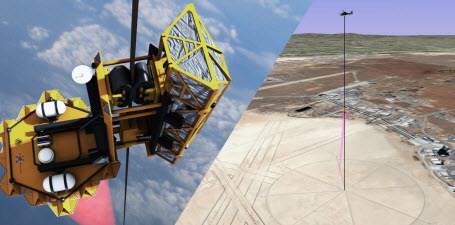 Finally! The Space Elevator Games are ON! The Climber / Power-Beaming competition will be held at the
Finally! The Space Elevator Games are ON! The Climber / Power-Beaming competition will be held at the 
 On the LaserMotive blog today, there was a post about a new team sponsor,
On the LaserMotive blog today, there was a post about a new team sponsor,  long-distance beam alignment. They’ve been doing a great job helping us out with our optical alignment procedures as well as providing some extremely useful hardware, all of which has enabled us to redirect (as it were) our energy towards other high-priority tasks.
long-distance beam alignment. They’ve been doing a great job helping us out with our optical alignment procedures as well as providing some extremely useful hardware, all of which has enabled us to redirect (as it were) our energy towards other high-priority tasks. I received this email today from Brian Turner, captain of the
I received this email today from Brian Turner, captain of the  An
An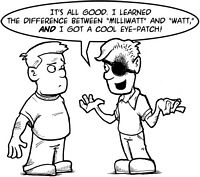 On the
On the  I missed this one…
I missed this one…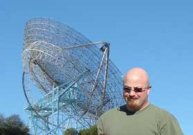 In the 4th installment of this series, Ed Gray, the head of ISEC’s Business Pillar, tells why he thinks everyone who wants to see a Space Elevator built should join
In the 4th installment of this series, Ed Gray, the head of ISEC’s Business Pillar, tells why he thinks everyone who wants to see a Space Elevator built should join 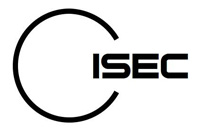 Thank you Ed. The Business Pillar of ISEC, as noted on the ISEC website, is charged with:
Thank you Ed. The Business Pillar of ISEC, as noted on the ISEC website, is charged with: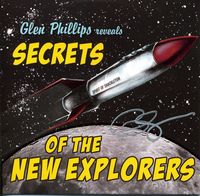 One other ISEC-related note; One of the benefits of joining as a “Standard” member is receiving an autographed copy of Glen Phillips CD, Secrets of the New Explorers. This CD has, IMHO, the best Space Elevator song written so far – and the rest of the album is pretty cool too. I
One other ISEC-related note; One of the benefits of joining as a “Standard” member is receiving an autographed copy of Glen Phillips CD, Secrets of the New Explorers. This CD has, IMHO, the best Space Elevator song written so far – and the rest of the album is pretty cool too. I